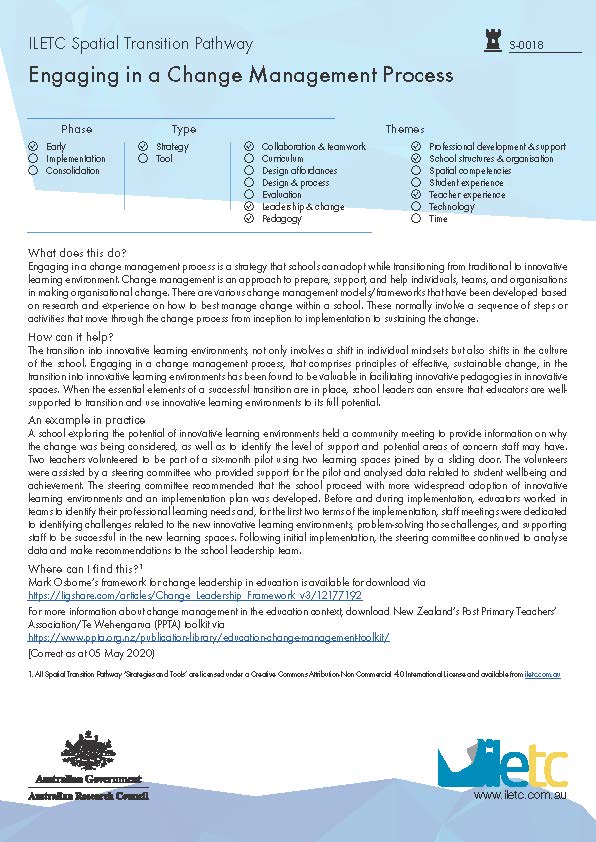| Introduction | Wayfinding activity | Spatial typologies | Spatial transition case studies | Spatial transition resources |
Spatial Transition Pathway
The Spatial Transition Pathway provides a framework for the strategies and tools which support teachers to make the journey of change into innovative learning environments. Strategy is defined as an explicit concept, theory or practice that enhances teachers’ use of innovative learning environments. A tool is an identifiable activity or protocol, that implements a strategy. You can use the database to search for strategies and tools by temporal phase or transition theme(s). If you would like to contribute a strategy or tool, please contact the ILETC team.
Engaging in a Change Management Process
Engaging in a change management process is a strategy that schools can adopt while transitioning from traditional to innovative learning environment. Change management is an approach to prepare, support, and help individuals, teams, and organisations in making organisational change. There are various change management models/frameworks that have been developed based on research and experience on how to best manage change within a school. These normally involve a sequence of steps or activities that move through the change process from inception to implementation to sustaining the change.

